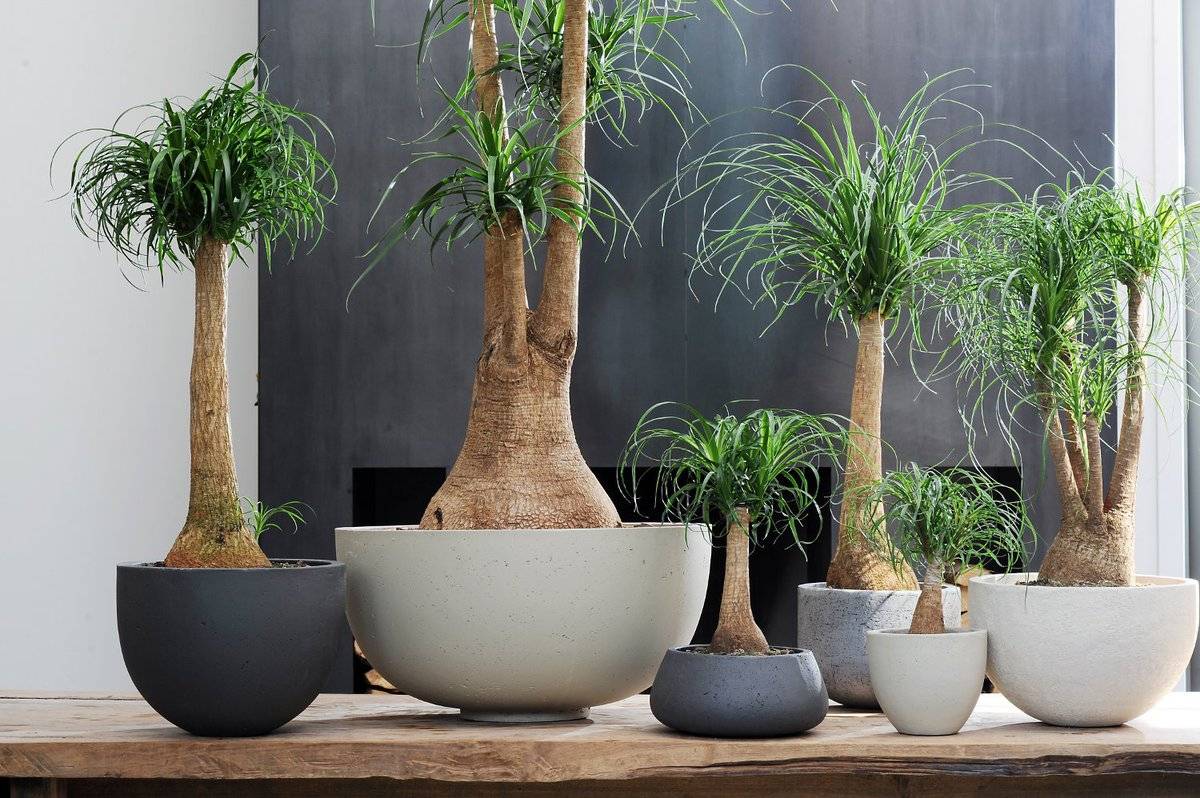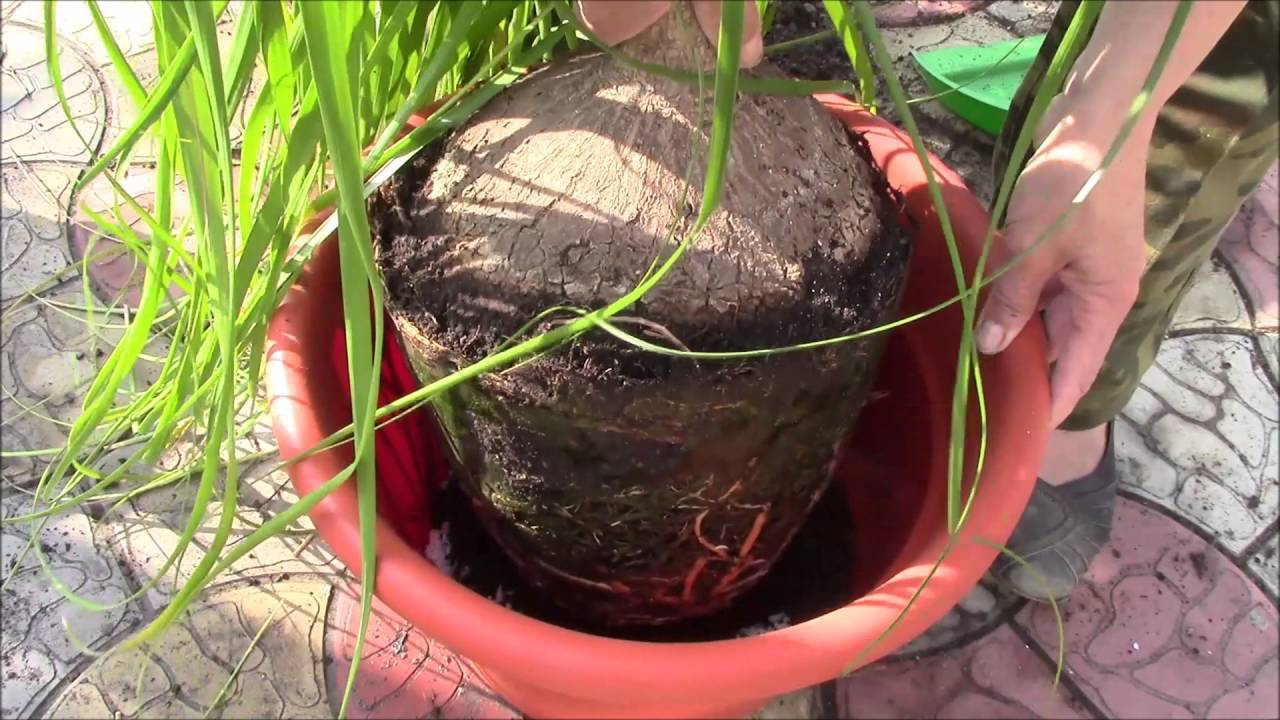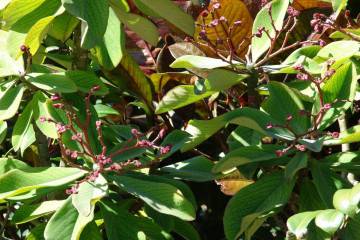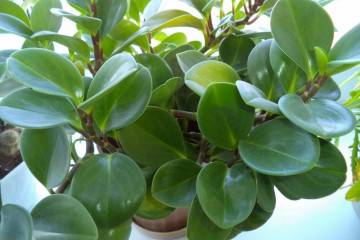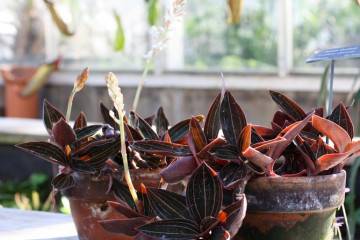Bocarnea: home care and popular types
Content:
Bocarnea is a perennial plant that is native to Mexico. Belongs to the Asparagus family and has several different names: elephant leg, ponytail, bottle tree. Under natural conditions, the tree reaches up to 8 m.
Main types
There are several types of bokarnei, each of which has distinctive features.
Bokarnea bent
Bokarnea unbent is an exotic plant that will become a real decoration in the house. Despite the unique appearance, it is not difficult to keep such a copy. The plant can withstand the sun's rays, rare watering, and also has strong immunity against pests. A feature of this type is the curved bottle-shaped barrel, which adds spectacularity. Medium-sized leaves grow randomly around the trunk.
The bottle tree looks great in a conservatory or spacious room, and is also suitable for hydroponic cultivation.
Bocarnea is a flower that does not bloom at home. In rare cases, plant owners who are more than 10 years old note the appearance of inflorescences, but such specimens are practically not found. You can make a tree bloom when kept in a greenhouse or greenhouse.
Thin
Nolina thin has a spherical trunk and long narrow leaves located on the crown of the plant. The tree rarely blooms with red or pink flowers.
Sticking out
In appearance, the tree looks like a thin nolina, however, the leaves of the protruding plant are more rigid and dense. This structure does not allow the leaves to hang down smoothly, so they stick out in different directions.
Matapskaya
This palm tree has a small height, up to 1.5 m. Long and thin leaves grow from the dense trunk, which create a wide "skirt" that protects the plant from the scorching sun rays in hot weather.
Home care
Despite the simple care, it is necessary to study the basic rules for the maintenance and reproduction of the plant.
Watering
Bocarnea recurvata is a plant that grows well in arid Mexico. Therefore, storing water in a solid trunk is a feature of a tree, moisture allows it to survive in a drought. Nature has laid down that bokarnea should grow in a climate that changes from warm to cool and dry.
During the spring-autumn period, it is necessary to water the soil as it dries. In the cool season, watering is reduced, since moisture accumulates better.
It is also not necessary to arrange drought, since the growth of the tree will be noticeably delayed.
In order for the plant to independently replenish its water reserves, it is necessary first to abundantly wet the entire surface of the soil, and after 20-30 minutes. drain the remaining moisture from the pallet. Some owners are afraid to pour a lot of liquid, so they reduce watering to a minimum.In this case, the moisture reserves in the tree decrease, the trunk begins to dry out and becomes soft.
Top dressing
It is necessary to feed the plant in the spring-summer period, when the tree is in the stage of active growth. Fertilizers are used once a month. It is recommended to alternate mineral and organic feedings. Fertilizers based on substances with a high nitrogen content have a positive effect on growth.
Spraying
The plant prefers medium humidity, so spraying is preferably done in hot weather, when the soil quickly absorbs moisture.
To remove the remaining liquid from the leaves, you can wipe them with a soft cloth.
Lighting
The bocarney is best placed in a place with diffused light. The pot is often placed next to a window that faces southeast or southwest.
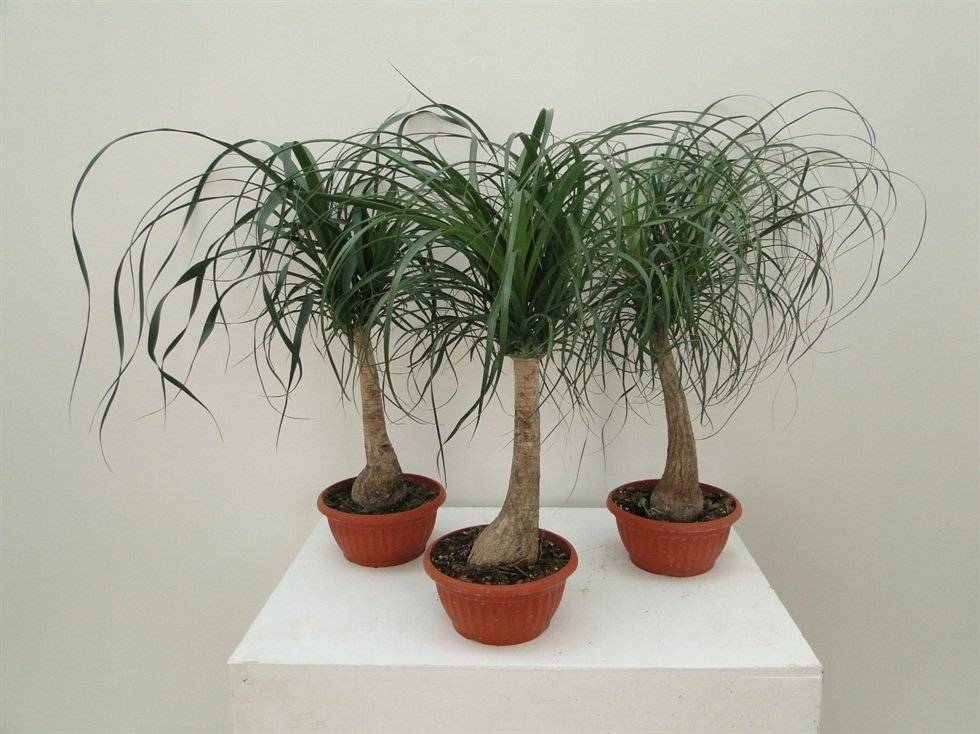
In the event of a lack of light, the central part of the plant begins to bend and strive towards the light source
In winter, it is preferable to surround the palm tree with additional lighting. It can be a fluorescent or phytolamp. Thus, the daylight hours for the plant are extended by several hours.
Plant transplant
A bokarnea plant, which is not difficult to take care of at home, requires regular transplantation. A young tree is transplanted once a year, since at this time the palm tree is growing rapidly. An adult specimen needs to be transplanted to a new place 1 time in 2-4 years, depending on the intensity of growth.
During the transplant, you must pay attention to the following rules:
- the optimal time for the procedure is the end of February-March. In case of emergency, they do it in October-January;
- several methods are used for transplanting: transshipment and full. In case of transshipment, the plant is moved to a new pot along with the old earthen clod. A complete transplant consists in cleaning the root from the substrate and rinsing it with boiled water;
- before and after transplanting, it is not recommended to water the plant for 5-8 days, since the tree should take root in dry soil;
- you should not choose too large containers for transplanting. The plant grows slowly, so it will not be able to master and occupy all the space. If a pot is too large, the growth of the plant slows down, and the roots begin to rot;
- each subsequent time it is necessary to choose a pot that is 2-4 cm larger than the previous one;
- during transplantation, it is not necessary to bury the thickened part of the trunk into the mail;
- there must be drainage in the pot, which will remove excess moisture and supply air to the soil.
Reproduction methods
Getting a new tree at home is not easy. Reproduction is carried out in two ways: by seeds and shoots.
Seeds
The disadvantage of this method is that the seeds germinate for a long time, and then also germinate slowly. Germination usually takes at least a month. This must be done in greenhouses with a temperature of 25-26 ° C.
By shoots
This method is carried out when the lateral shoots are formed. By the way, this does not always happen. With the help of a sharp knife, the shoot is cut and processed to stimulate root growth. Then the shoot is planted in the ground and covered with polyethylene. The film can be removed when the plant is ventilated or watered. The polyethylene is finally removed when the plant has taken root and the first leaves began to appear.
Possible problems
The bottle tree has strong immunity that protects the plant from sudden changes in temperature, drought, and pests. However, there are problems when growing a flower. They can be the result of improper care and the action of parasites.
Trunk decay
Decay of the trunk and root system usually begins due to over-watering. In this case, it is necessary to clean the pot from the soil, remove all rotten areas and treat the surface with a manganese solution. There is no need to worry about removing the entire root system, as the tree can grow new roots. The pot must be disinfected with boiling water. After planting, do not water the tree for 7-10 days for the system to take root well.
Then it is necessary to gradually moisten the soil, while making sure that the water does not end up on the trunk.
Foliage is faded and small
Leaf problems reflect improper lighting. In this case, you need to move the tree closer to the light source or purchase additional lighting.
Bocarnea, the care of which does not require special skills, is able to adapt to any conditions of detention. Such a plant will perfectly fit into any interior and will delight a person with its unusual appearance.
